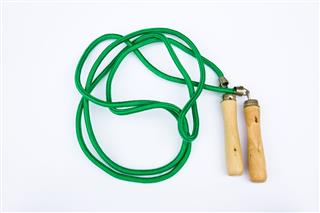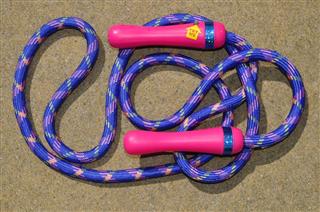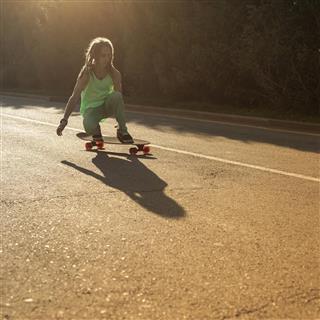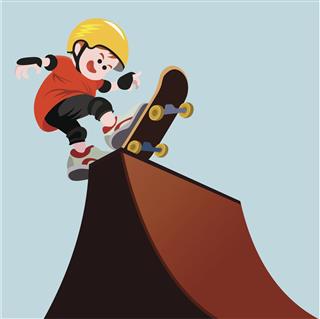
The importance of developing locomotor skills in young children can never be undermined. To ensure that your child grows up to be strong, flexible, and physically active, it is necessary to impart these skills at a young age. This article tells you more…
List of Locomotor Skills
- Walking
- Jumping
- Hopping
- Galloping
- Leaping
- Running
- Sliding
- Skipping
As a part of the natural growing process, a child begins to attempt minor neck movements within a month of his/her birth. Very soon, this child starts moving the arms and feet, aiming for more flexibility.
As the child becomes a preschooler, it is time to introduce a whole new set of physical exercises that will contribute to her overall growth and well-being.
Locomotor skills comprise the basic movements that build the foundation of her physical health in the years to come.
Generally, a child begins to walk at the age of 12 months, runs and jumps a year later, and gallops and learns to skip by the age of 3 years. These are the skills that need repeated practice, encouragement and guidance from an elder.
Walking

Once a child reaches the age of 10 months, she starts making attempts to hold on to counters, tables, beds, chairs, or even your leg to lift herself up in the standing position. It certainly takes a lot of practice from that time onwards, but children can be quite persistent.
To help your child improve his sense of balance, you can introduce lots of fun-filled activities like –
- Draw a straight line on the floor and ask your child to walk on it without wavering.
- In due course, you can include some twists and turns.
- Demonstrate the sideways walk and the backward walk to your child.
- Gradually try to teach her different styles of walking as you progress (try marching, brisk walking, or even moonwalking!)
Jumping

Jumping is great fun, and a child need not be taught that. Most children tend to instinctively “jump with joy” at anything they find delightful. But when it comes to matters of safety, you’d rather have them learn jumping in the correct manner, than risking a freak injury. Here’s what you do –
- Begin with teaching your child to jump on the same spot.
- Ask your child to keep her feet close to each other, bend the knees, and take a jump.
- Soon, you can teach her to jump forward, a little higher, and later, even backwards.
- Once she gets the fundamentals right, you can make use of a footstool or a step to teach her how to jump from an elevated level.
- Of course, once your little one gets on to the jumping bandwagon, it’s going to be hard for him or her to stop.
Hopping

Bring out your child’s inner rabbit by encouraging some serious hopping. While a trampoline may be too dangerous for your preschooler, a few hopping demos in the safety of your home is a good idea. Try doing this –
- As with most children, your child may already have mastered the annoying routine of hopping on the bed.
- You need to refine this skill by teaching him to hop using one leg, with the other off the ground, bent slightly.
- It is necessary to practice this exercise with using both, the left and the right leg, maintaining a sense of balance.
- Introduce your child to hopscotch, and what’s more, involve your family in the game as well.
Galloping

Gallops may be a little tough to teach, but that doesn’t make them any less fun. Now that your child is finding it easy to hop and jump, galloping is the next thing she will attempt. Here are some ways to go about it –
- Gallops, basically, are big steps, so an interesting way to teaching your child would be to have an obstacle course at home or in the garden.
- Line up some soft toys with some distance in between and demonstrate the technique to take big steps, without stepping on the toys lying on the floor.
- Once your child starts feeling comfortable, gradually increase the distance between the toys.
- Also, try teaching her the sideways gallop.
Leaping

Leaps require fastidious training, along with some safety measures in place while teaching young kids. It is advised to practice leaping on a soft mattress, to begin with.
- Obstacle courses work well when it comes to taking a leaping lesson.
- Teach your child to do a short sprint to get the necessary elevation required for a leap. This is where a soft mattress comes in handy.
- It is necessary to teach your child the correct technique to land on both feet, in order to avoid a fall.
- This may take some effort, but is well worth the fun.
Running

Running is an enjoyable activity for all kids. Parents, however, need to ensure that their child is maintaining the correct posture while running. Children never pay heed to techniques while they’re having fun, so it is up to the parents to watch out for these simple errors.
- Leaning a little too forward from the hip places undue pressure on the heels. A slight bend in the waist is advised.
- Children often take large steps to cover more ground, which may lead them to trip. Make them run taking small paces.
- Encourage them to be light on their feet and not stomp on the ground too hard.
- The swing of the arms must be moderate.
Finally, don’t forget to provide some motivation in the form of a companion, or a dog, or even balloons!
Sliding

It is easier to have children understand the concept of sliding by using the slide in the park. Toddler slides are definitely enjoyable for kids before they attempt the real stuff.
- Practice sliding only on floor mats as a safety measure.
- Do a slight sprint before you come to the spot where you begin the slide.
- As you begin the descent, slide the forward leg, tucking the hind leg underneath the body to cushion the torso.
- Teach your child to practice the fall by tucking a leg underneath the body with the hands straight up in the air.
- Monitor this activity at all times to ensure your child’s safety.
Skipping

Skipping without a rope combines walking, hopping, and a little bit of jumping. When there’s a skipping rope involved, it can be more chaotic. First, let your child observe your feet, and then your wrist movements as you skip, before you hand over the rope to her.
- Let her learn to flick the wrists to have the rope above her head, and bring it down to her feet.
- Once the rope is at the feet, ask her to jump over it.
- The next step is to flick the wrist again and get the rope over the head, and next to the feet.
- This will take time, and truckloads of patience.
- Offer encouragement at every attempt.
Developing locomotor skills is a fun-filled and rewarding experience for both, the parents and the child. Though its basic purpose is to improve the physical well-being of the child, it does far more to strengthen the bond between the parents and the child more than anything else can.








